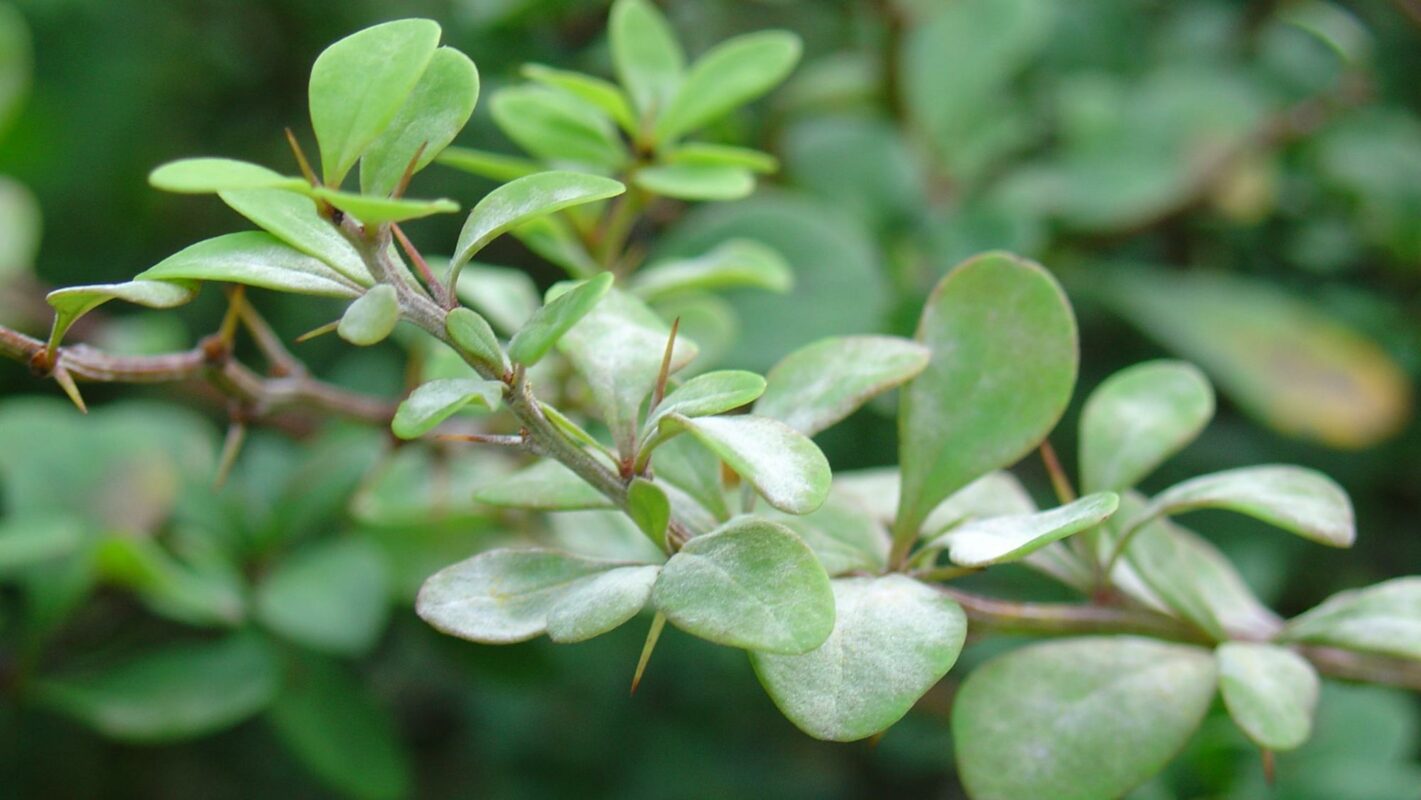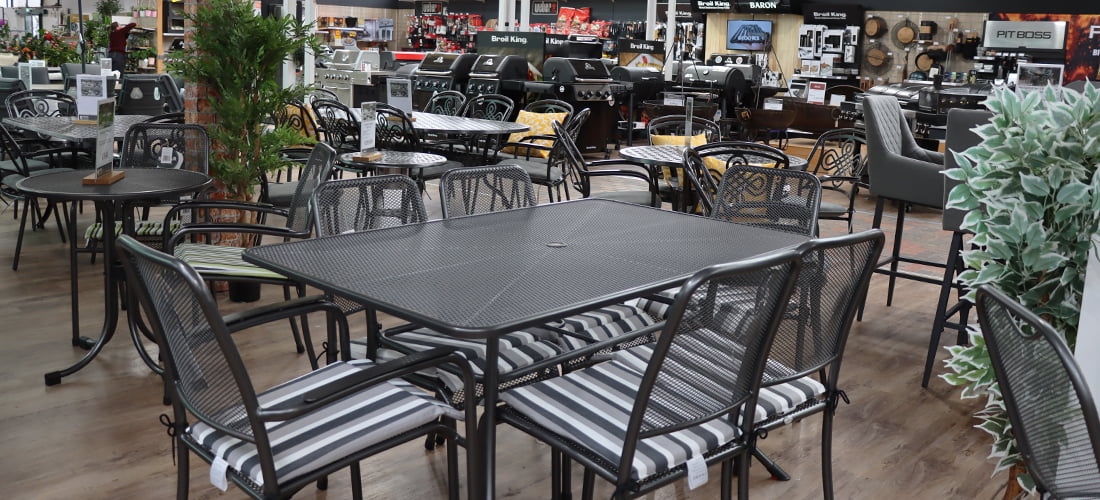Hedges provide a much more interesting living boundary than fences. They can be high to screen unsightly objects within or outside the garden. Privacy and even some soundproofing from neighbours can be achieved. Thick hedges can form effective windbreaks not only making gardens more comfortable but, in windy sites, especially near the coast, enabling a much wider range of plants to be grown.
PRUNING AND CLIPPING HINTS FOR ALL HEDGES
The first principle is to form a close, dense base. To help achieve this, do not allow hedges to increase too rapidly in height. During the early years, three or four clippings a year may be necessary. Mature hedges will need clipping only once or twice a year. Commence the trimming of closely clipped Holly, Privet, Quickthorn, Yew and similar hedges in June, then repeat two or three times at six week intervals. It is never wise to leave a hedge for years then chop it down: conifers rarely survive this treatment. Trim them as above during each growing year. Heights given are for 10 years growth.
Many of the plants mentioned below can be viewed on our Plant Finder.
CONIFEROUS HEDGES
Plants that blot out the light and tend to spread and so deter weeds from growing:
- Alchimellia mollis (Lady’s Mantle): leaves with shallow rounded lobes and serrated edges. Yellow-green frothy flowers which self seed. Ideal for flower arranging. Height 30-50cm. Spread 40cm.
- Bergenia (Elephant’s Ears): glossy, leathery leaves that sometimes turn red in autumn. White, pink or red flowers early in the season. Ideal spreader for shade. Height 20-40cm. Spread 40cm.
- Brunnera macrophylla: sprays of Forget-me-not like flowers with matt green or variegated hairy leaves. Self seed readily. Ideal for ground cover under trees. Height 30-50cm. Spread 40cm.
- Convallaria (Lily of the Valley): if it enjoys its shady position, will flower every year producing white or pink flowers. Spreader. Height 15-20cm. Spread 50cm.
- Dianthus (Carnation / Pink): ideal for chalk.
- Epimedium (Barrenwort / Bishop’s Hat): semi-evergreen perennial for attractive leafy ground cover in semi-shade. Height 30cm. Spread 40cm.
- Geranium (Crane’s Bill): vary greatly in stature and in habit. Free flowering, white to blue.
- Hosta (Funkia / Plantain Lily): many different types all grown for their attractive deciduous foliage. Excellent ground cover in moist positions in sun or shade.
- Pulmonaria (Lungwort / Soldiers & Sailors): hardy herbaceous perennials that tend to be evergreen, some with white spotted leaves. Flowers, blue, pink, red or white. Slow spreaders. Height 30cm. Spread 30cm.
- Stachys lanata (Lambs Tongue): hardy in coastal areas. Soft “wooly” leaves and spikes of purple flowers in July. Needs any well drained soil. Height 30-50cm. Spread 30cm.
- Tellima: ‘ever-red’ perennial with leaves like Heuchera, slowly spreading. Insignificant flowers, better in shade. Height 30cm. Spread 45cm.
- Tiarella (Foam Flower): dense mass of heart shaped evergreen leaves. Height 20cm.
- Tolmiea menziesii (Piggy-back plant): produces young plants on leaves. Shade. Height 2cm. Spread 6cm.
INFORMAL FOLIAGE, FLOWERING AND BERRYING HEDGES
A relaxed, less formal hedge made up of a number of different evergreen and/or deciduous shrubs to create varying heights, textures and colours can be very effective. Especially useful to create a natural looking boundary. What to choose is all a matter of personal taste.
-
- Aucuba (Laurel): Various spotted & variegated forms. 2-4m high, plant 1.5- 2m apart. Likes shade.
- Berberis darwinii: 1.2-1.8m high, plant 60cm apart.
- Berberis stenophylla: 2-3m high, plant 60cm apart.
- Berberis thunbergii forms especially ‘Atropurpurea’, ‘Helmond Pillar’ and ‘Red Chief’ of varying heights and spread. Prune after spring flowering. All Berberis have spiky stems and yellow flowers.
- Buxus sempervirens (Common Box): Ultimate height up to 3m, plant 50cm apart. Prune in spring.
- Cornus (Dogwood): Grown principally for winter coloured stems. Most 1.5m high, plant 1.5m apart.
- Cotoneaster lacteus: White flowers, red berries. Prune off long shoots in summer. 2.5m high, plant 90cm apart.
- Cotoneaster simonsii: Semi evergreen, prune in winter. Erect habit growing to 2.5m. Plant 45cm apart.
- Crataegus monogyna (Hawthorn, May, Quickthorn): White scented spring flowers & small crimson haws in autumn. Ideal on chalk (grows on the Downs). 5m high, plant 30cm apart. (HP)
- Eleagnus ebbingei: Leathery grey green leaves growing to 3m x 2m. Plant 1.5m apart. Coast.
- Eleagnus ebbingei ‘Coastal Gold’, ‘Gilt Edge’ and ‘Limelight’ have variegated leaves. Slower growing.
- Escallonia: Evergreen or semigreen ideal for chalk and coast. General height 1.8m. Plant 75cm apart.
- Euonymus ovatus (Japonicus): Excellent by sea, tolerant of salt spray. 1.8m high, plant 45cm apart. Trim in spring.
- Forsythia: Various forms with yellow spring flowers. Generally 1.8m high, plant 1.8m apart.
- Griselinia littoralis: Fresh green leaves for hedging near the sea. 3.5m high, plant 60cm apart.
- Griselinia variegata is a variegated, more tender form.
- Hebe speciosa (Veronica): Suitable for mild areas. Varying heights but plant all 60cm apart.
- Hippophae rhaminoides (Sea Buckthorn): Silvery white leaves with berries. 1.8m high, plant 80cm apart.
- Ilex (Holly): Many varieties can be mixed together. 2m high, plant 45cm apart. Trim or prune for Christmas decorations. Male & female for berries.
- Laurus nobilis (Bay): For sunny sheltered positions. Height 4-5m. Plant 75cm apart.
- Mahonia: Tough spiky leaved evergreens with yellow winter flowers. Various heights around 1m. Tolerates most conditions including shade. Plant 60cm apart.
- Olearia haastii: Greyish oval leaves with daisy like flowers. Height 1.2m, plant 90cm apart. Good for coast.
- Osmanthus burkwoodii: Toothed evergreen leaves with scented white flowers. 1.8-2.4m, plant 50cm apart.
- Pittosporum tenuifolium: The attractive shiny small leaved foliage is attractive and forms a familiar useful background for flower arrangements. There are also variegated tenderer forms. 2m high, plant 45cm apart.
- Prunus laurocerasus (Common Laurel): Tough large shiny oblong leaves ideal for thick screens. Tolerant of shade. Height 5-6m, plant 1.5-2m apart.
- Prunus lusitanica (Portugal Laurel): Pointed dark green leaves with red stalks. ‘Variegata’ is a slower growing form. Height 5-6m, plant 1.5-2m apart.
- Prunus pissardii ‘Nigra’: Deep purple foliage and pink spring flowers. Height 6-7m, plant 60cm apart.
- Pyracantha: Although often considered a climber, many forms make an attractive and prickly hedge, especially P. rogersiana & P. ‘Red Column’. Height 1.2-1.8m, plant 50cm apart.
- Rhododendron luteum (Azalea pontica): Yellow honeysuckle-like scented flowers in May and June and rich autumn coloured leaves. Must have acid soils. Height 2-2.5m, plant 60cm apart.
- Rhododendron ponticum (Common Rhododendron): Purplish flowers in June. Height 1.8-3m, plant 60cm apart.
- Rosemary ‘Miss Jessops’: Formal scented hedge for sunny or coastal position. Pale bluish flowers in May / June. Height 1.2-1.8m, plant 90cm apart.
- Rosa (Rose): Many forms make attractive hedges:
- R. ‘Queen Elizabeth’: height 1.5m, plant 90 cm apart. Old fashioned species roses / Musk roses including Rosa rugosa, height 1.2-1.5m, plant 1m apart.
- ‘Zephirine Drouhin’ for thornless hedging, height 1.5-1.8m, plant 1m apart.
- Symphoricarpus (Snowberry): White or pink berries. Height 1.2-1.5m, plant 60cm apart.
- Syringa vulgaris (Common Lilac): Perfumed flowers late spring. Height 2.5- 3m, plant 1-2m apart.
- Tamarix: T. gallica pink & T. pentandra rosy pink. Ideal for coastal situations, height 1.2-1.5m, plant 60cm apart.
- Ulex (Gorse): Single or double yellow flowers with spiky stems. Height 1.5m, plant 2m apart.
- Viburnum tinus: Rose / white flowers all winter. Height 1.8-2.5m, plant 60cm apart.
LOWER GROWING INFORMAL FOLIAGE FLOWERING AND BERRYING HEDGES
Many of these are useful to provide a small decorative division between different “rooms” or parts of the garden.
- Berberis thunbergii ‘Atropurpurea Nana’ or B. thunbergii ‘Bagatelle’: Reddish purple leaves. Compact and formal. Height 35 – 45cm, plant 35cm apart.
- Berberis verruculosa : Dense evergreen foliage with golden Spring flowers. Height 1m, plant 60cm apart.
- Buxus sempervirens ‘Suffruticosa’: Genuine box edging ideal in a formal design. Height 15-20cm, plant 10cm apart.
- Euonymus ‘Emerald Gaiety’ / ‘Emerald ‘n’ Gold’: Easy to grow for all year round interest. Although a ground coverer, can be trimmed to shape. Good for shade. Height 50-60cm, plant 50cm apart.
- Lavandula (Lavender): ‘Hidcote’, ‘Munstead Dwarf’, spica, vera. Aromatic leaves. Varying heights from 50cm to 1.2m, plant 30-35cm apart.
- Pernettya: Dense thickets of wiry stems and prickly leaves and red, pink or white berries needing one male to three female plants. Need an acid soil. Height 90cm, plant 1.5m apart.
- Potentilla farreri: Pure yellow flowers all summer long.
- P. ‘Jackmans’: Brilliant yellow flowers. Height 1m, plant 60cm apart.
- Prunus cistena ‘Crimson Dwarf’: Single pink flowers and deep crimson foliage. Height 1.2-1.5m but can be restricted, plant 60cm apart.
- Santolina chamaecyparissus: Feathery silvery leaves. S. virens has green leaves. Height 45-60cm, plant 25cm apart.
- S. nana: Denser and more compact. Height 30cm, plant 20cm apart.
TALLER FORMAL FOLIAGE FLOWERING AND BERRYING HEDGES
These are of varying heights, usually planted as one species planted to form a neatly clipped hedge.
- Acer campestre (Field Maple): Red leaves in spring turning orange in autumn. Cool, moist soils. Height 1.8-3m, plant 45cm apart. (HP)
- Carpinus (Hornbeam): Easier to establish on heavy soil than beech and ideal for exposed sites. Height 1.5 -2.5m plant 45cm apart. (HP)
- Crataegus monogyna (Quickthorn): For early white spring flowers. Height 1.5-2.5m, plant 30cm apart. (HP)
- Euonymus ovatus (Japonicus): An adaptable hedge, thriving by the sea. Height 1.5-2.5m, plant 45cm apart.
- Fagus (Beech):
- ‘Green’ – The brown leaves persist throughout the winter.
- ‘Purple’ – Deep purple leaves also last a long period.
- The two varieties look attractive alternatively mingled with each other to form a hedge. Height 6-7m, plant 45cm apart. (HP)
- Ligustrum (Privet): Common, golden and oval leaf forms form a close knit semi-evergreen hedge. Takes a lot of goodness from soil nearby. Height 3m, plant 45cm apart. (HP)
- Lonicera nitida: Dense smail leaved evergreen for sunny or shady positions.
- L. nitida ‘Baggesens Gold’ is a gold leaved variety which should be planted in full sun.
- L. pileata ‘Yunnanensis’ is an improved form. Height 1.2-1.8m, plant 30cm apart.
- Prunus spinosa (Blackthorn / Sloe): Early spring white flowers and damson-like fruits for winemaking or for flavouring gin. Height 1.5-2.5m, plant 30cm apart. (HP)
VANDAL/BURGLAR PROOF, ANIMAL DETERRENT & IMPENETRABLE PRICKLY BARRIERS
- Berberis: Spiky branches and prickly leaves.
- B. darwinii & B. stenophylla particularly useful. Height 1-1.5m, plant 75cm apart.
- Crataegus monogyna: Straight sharp thorns on close knit stems. Height 5m, plant 30cm apart.
- Eleagnus ebbingei: Thick growing dense hedge with prickly stems. Height 3m, plant 1.5m apart.
- Ilex (Holly): Decorative hedge of varying prickliness according to variety. Height 2m, plant 45cm apart.
- Mahonia: Vicious spiky evergreen. Height 1-2m, plant 60cm apart.
- Pernettya: Although low growing, forms a wide prickly barrier. Height 90cm, plant 1.5m apart.
- Pyracantha: Prickly dual-purpose hedge (berries & flowers). Height 1.2-1.8m, plant 50cm apart.
- Rosa rubignosa / rugosa / xanthia ‘Canary Bird’ and other roses have heavily spiked stems.
- Rubus cockburnianus (Ornamental Blackberry): Low arching impenetrable barriers.
- Ulex (Gorse): The ultimate deterrent covered in sharp spikes like barbed wire! Height 1.8m, plant 2m apart.
(HP) Available as hedging packs during dormant season, economically packed in 5’s or 10’s.
For more information, please visit one of our Garden Centres and speak to a member of our friendly and knowledgeable plant team.








